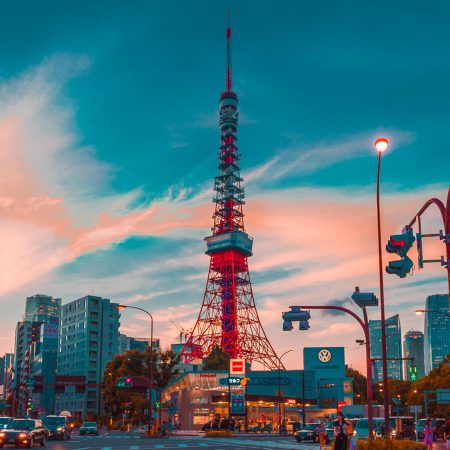How to Romanize Japanese Words Using Romaji

With the upcoming 2020 Summer Olympics and Paralympics expecting 31 million foreign visitors and the Japanese government’s declaration to receive up to 345,000 foreigners over five years starting in April, Japan is expected to receive a major influx of tourists next year.
With this, the Japanese government and the private sector are not only rushing to prepare English guides, menus, and signages, but also in writing Japanese names and words in a way that is easily understood and recognized by both foreign and Japanese people: through the system of romanized Japanese scripts called “romaji”.
The use of romaji has become increasingly important in modern Japan and is evidently seen being used in public places such as restaurants or stations in the country.
Table of contents
What is Romaji?

Romaji is the method of writing Japanese words using the Roman alphabet. Since the Japanese way of writing is a combination of kanji and kana scripts, romaji is used for the purpose that Japanese text may be understood by non-Japanese speakers who cannot read kanji or kana scripts. This is commonly used in Japan for street directions, passports, dictionaries, or textbooks on how to learn the Japanese language.
Additionally, it also used to input Japanese terms into word processors and computers and devices that do not support the display of Japanese characters.
Basically, romaji is the transliteration of Japanese terms to the Roman text or other languages that use the Roman alphabet. There are different romanization systems of the Japanese language. The three main systems are Hepburn, Kunrei-shiki, and Nihon-shiki. To further guide you, this article will discuss the three Japanese systems of romanization in detail.
The Hepburn System – Japanese for Foreigners

In 1885, the Hepburn System (Hebon-Shiki) was invented to form a unified system of romanization in Japan. This system was named after the American missionary, James Curtis Hepburn, who used this style of transliteration for his Japanese to English dictionary’s third edition which was widely disseminated during that time.
The Hepburn style is the most common romanization system used by most foreigners (from English-speaking nations) who are learning to spell Japanese in the Roman alphabet format. Because this style generally follows the English phonology with Romance vowels, it is considered to be the best way to render Japanese pronunciation for Westerners.
This system of romanization is also used by Japanese for transliterating Japanese names, locations, and important information such as train tables, road signs, or for official foreign communications.
Let’s take kana “し” as an example. This kana is romanized as shi so that the members of the sagyō or “s” kana “さしすせそ” are romanized as sa, shi, su, se, and so. In the same way, “つ” is romanized as tsu.
To indicate long vowels, the Hepburn system uses a bar over the letters called macron. Although this system is popular among foreigners learning Japanese, this is considered to be the less regular type of romanization system compared to the other two as seen in the examples above.
Nihon-shiki – Romanization for Japanese People by Japanese People

At the time when the Hepburn system was already developed in Japan, the physicist Aikitsu Tanakadate also invented another romanization style. The intention behind this was to replace the Hepburn system of romanization, as well as to replace the traditional kanji and kana system. He thought that this new romanization format could make it easier for Japan to compete with the Western world.
Intended for the use of Japanese people, Aikitsu developed a more regular form of romanization that makes it easier to pronounce for an English speaker. In its own form, Nihon-shiki maintains a strict one kana, two-letter form. Additionally, it has unique forms for all of the kana homophones.
Let’s take kana “し” as an example. This kana is romanized as si so that the members of the sagyō or “s” kana “さしすせそ”, are romanized as sa, si, su, se, so. In the same way, “つ” is romanized as tu. The kana “た, ち, つ, て, と” become ta, ti, tu, te, and to respectively.
Kunrei-shiki – The Japanese Standard

Kunrei-shiki is the system of romanization that is most widely used within Japan today, and it is considered to be a modified version of the Nihon-shiki style.
The only difference between the two is found in its kana syllabary and modern pronunciation. Let’s take characters “づ” and “ず” as an example. These characters are pronounced identically in modern Japanese. Kunrei-shiki ignores the difference in kana and represents the sound similarly as zu. Nihon-shiki on the other hand will romanize “づ” as du and “ず” as zu. Similarly for the pair “じ” and “ぢ”, they are both zi in Kunrei-shiki, but are zi and di respectively in Nihon-shiki.
Kunrei-shiki is standardized by the Japanese government and the International Organization for Standardisation as ISO 3602. This transliteration is being taught to public schools and commonly used for romanizing Japanese names.
Conclusion: What Romaji System Should You Use?

Each system of transliteration has its own intended purpose. To choose which system is best would mean choosing the one that you most prefer or is relevant at a particular point in your Japanese language studies.
Some foreigners prefer Hepburn style as this is basically considered to be the best way to render Japanese pronunciation written in Roman alphabet. However, there are particular aspects of the other two more “regular” systems of romanizations that could be helpful in your journey on learning the Japanese language.
So it might be helpful not to focus on only one. But keep in mind, there are many systems to choose from and no form is always better than the other.
MOTTO JAPAN STUDY introduces its Japanese Language Support for foreign students learning Japanese. Need help with your homework or practicing conversation? Ask a Japanese person here:
Motto Japan, the community platform to support foreigners with the foundation for life in Japan, including Japanese study, job opportunities, and housing service. Motto Japan Media will provide a wide variety of information for Japanese fans all over the world, to create a cross-cultural environment and enrich the life of foreign residents in Japan!













Leave a Reply